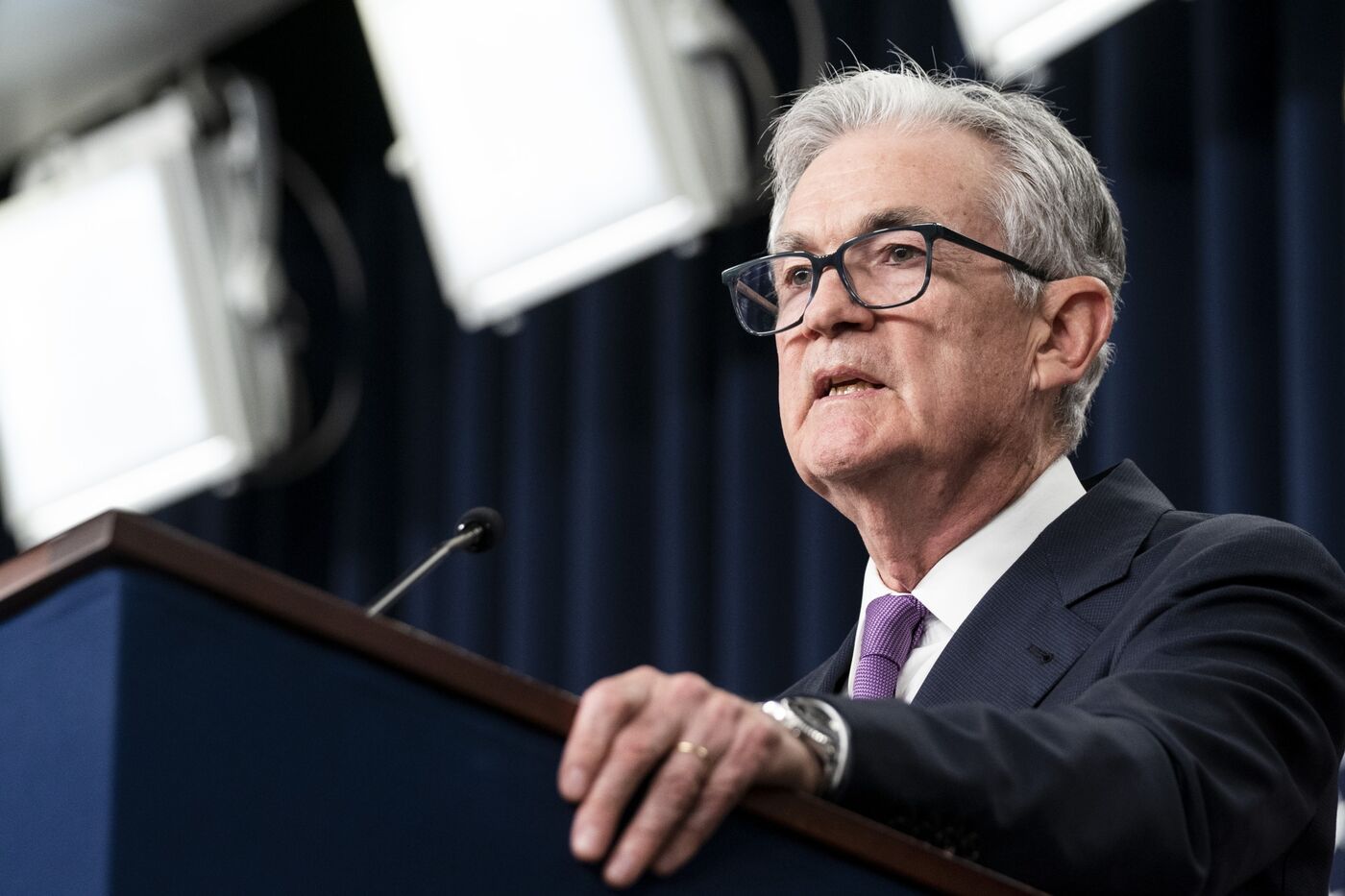On April 7, 2025, U.S. President Donald Trump once again called on the Federal Reserve (Fed) to reduce interest rates, emphasizing that the American economy is currently experiencing little to no inflation. In a series of posts on his Truth Social platform, Trump argued that now is the “perfect time” for Fed Chairman Jerome Powell to act decisively, citing falling energy prices, declining food costs, and a lack of inflationary pressure as key reasons for his stance. This latest push comes amid heightened economic uncertainty following Trump’s recent trade policies, including retaliatory tariffs that have rattled global markets.

Trump’s Economic Argument
Trump’s message was clear: the U.S. economy is in a strong position to benefit from lower interest rates. “Oil prices are dropping, interest rates are falling (the Fed is slow, so they need to cut rates!), food prices are down, there’s NO inflation, and America—a nation abused for years—is raking in billions weekly from countries taxing our goods,” he wrote. He further highlighted that despite retaliatory tariffs from nations like China, which recently raised duties on U.S. goods by an additional 34%, the U.S. is poised for growth if the Fed acts swiftly.
Official data supports some of Trump’s claims. According to the U.S. Bureau of Labor Statistics, the Consumer Price Index (CPI) has remained relatively stable in recent months, with core inflation hovering around 2.4% as of March 2025—close to the Fed’s target of 2%. The Department of Energy also reported a decline in crude oil prices, with West Texas Intermediate (WTI) falling below $60 per barrel in early April, the lowest level in four years. Additionally, the U.S. Department of Agriculture noted a 69% drop in egg prices over the past two months, driven by improved supply chains and lower production costs.
Market Turmoil and Fed’s Hesitation
Trump’s call for rate cuts comes at a tumultuous time for financial markets. The announcement of reciprocal tariffs on over 180 countries and territories on April 2, 2025, triggered a sharp sell-off in global equities. The S&P 500 plummeted over 10% in just two days, while the Nasdaq entered correction territory. Internationally, China’s Hang Seng Index dropped 13%, and Japan’s Nikkei 225 fell 7.8%, signaling widespread concern over a potential trade war. Analysts at JPMorgan Chase have warned that sustained high tariffs could push the U.S. economy toward a recession if not offset by monetary easing.
Despite this, the Fed has remained cautious. In its March 2025 meeting, the Federal Open Market Committee (FOMC) projected only two rate cuts for the year, a conservative stance compared to market expectations of four reductions, as indicated by the CME FedWatch Tool. Fed Chairman Jerome Powell has consistently emphasized a data-driven approach, stating, “We will not react to political pressure but will act based on economic indicators.” Powell has also pointed to lingering inflationary risks, such as potential supply chain disruptions from Trump’s trade policies, as reasons for the Fed’s reluctance to cut rates aggressively.
Economic Implications of Lower Rates
Lowering interest rates could stimulate economic activity by reducing borrowing costs for businesses and consumers. The U.S. Labor Department’s latest report showed a robust job market, with 228,000 new jobs added in March 2025 and an unemployment rate of 4.2%. A rate cut could further bolster this growth, encouraging investment and spending. However, critics argue that with inflation already low, additional cuts might overheat the economy or weaken the U.S. dollar, especially as Trump’s tariffs drive up import costs.

Trump’s relationship with the Fed has long been contentious. During his first term, he frequently criticized Powell, whom he appointed in 2018, for not cutting rates fast enough. Now, in his second term, Trump appears to be doubling down on this pressure, framing Powell’s hesitation as a missed opportunity to cement America’s economic dominance. “This is the PERFECT time for Fed Chairman Jerome Powell to cut interest rates. He’s always ‘late,’ but now he can change that, and fast,” Trump posted.
Broader Context: Trade and Economic Strategy
Trump’s push for lower rates aligns with his broader economic agenda, which blends aggressive trade policies with domestic growth initiatives. His administration has touted the tariff revenue—estimated at billions of dollars weekly—as a win for American workers. Yet, the strategy has drawn mixed reactions. While some economists praise the focus on rebalancing trade deficits, others warn that escalating tensions with major partners like China, Mexico, and Canada could disrupt global supply chains and reignite inflation.
The International Monetary Fund (IMF) recently revised its 2025 global growth forecast downward to 2.8%, citing trade uncertainties as a primary factor. In the U.S., the National Association of Manufacturers reported that 75% of its members are concerned about rising input costs due to tariffs, potentially offsetting any benefits from lower rates.
What’s Next?
As of April 7, 2025, the Fed has not signaled an immediate response to Trump’s demands. Its next policy meeting, scheduled for late April, will be closely watched for clues about future rate decisions. Market sentiment remains jittery, with investors bracing for further volatility. Stuart Kaiser, head of U.S. equity strategy at Citi, noted, “There’s still plenty of room for stocks to fall if trade tensions escalate further.”
For now, Trump’s vision of a low-rate, high-growth economy hinges on Powell’s willingness to act. Whether the Fed bends to political pressure or holds its ground will shape the trajectory of the U.S. economy in the months ahead.




